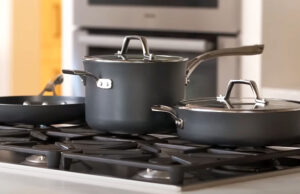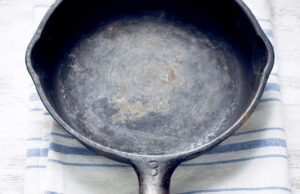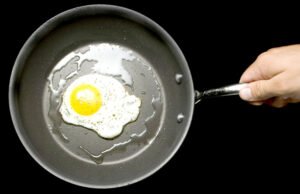As an Amazon Associate, I earn from qualifying purchases at no extra cost to you.
Maytag Dishwasher Problems: Fix Them Fast and Easily
Are you tired of your Maytag dishwasher not working right? Many people face common problems, like not cleaning dishes or not draining. I faced this myself and fixed it quickly by checking the filters and spray arms. In this article, you will learn easy ways to solve Maytag dishwasher problems and make it work like new.
Check the Power and Controls
Sometimes the dishwasher does not start because it does not get power. First, check if it is plugged in correctly. Then, make sure the circuit breaker is not tripped. If the power is fine, the door latch could be broken, stopping the dishwasher from starting. You can fix this by closing the door firmly or replacing the latch.
Also, the control panel may have an issue. If buttons do not respond, try resetting the dishwasher. Press the start button and hold it for a few seconds. If it still does not work, the control board may need a replacement. This is a simple fix if you follow the manual.
Sometimes, the dishwasher starts but stops in the middle. This can happen if the thermal fuse is blown. The thermal fuse protects the machine from overheating. Check the fuse with a multimeter. If it shows no continuity, replace it carefully.
Always make sure the dishwasher is level. An uneven dishwasher may prevent it from starting or cause unusual noises. Use a level tool and adjust the feet until it sits flat. After leveling, test the dishwasher to see if the problem is solved.
- Check plug and power supply
- Inspect circuit breaker
- Test door latch
- Reset or replace control panel
- Check thermal fuse
- Make dishwasher level
Fix Water Not Filling
If your dishwasher does not fill with water, it cannot wash dishes properly. Start by checking the water supply. Make sure the valve is open fully. Sometimes, the valve can be blocked by debris. Clean it carefully to allow water to flow.
Next, check the float switch. The float switch stops water from overflowing. If it is stuck, the dishwasher may not fill. Clean the float and make sure it moves up and down easily. Test it by pushing it manually to see if water enters.
The inlet valve can also cause problems. It lets water in and may wear out over time. Remove it and check for clogs or damage. If damaged, replace the valve to fix the issue. Always turn off the water supply before replacing parts.
Sometimes, low water pressure causes poor filling. Check your home’s water pressure. If it is low, try running other taps to see if the pressure is weak. You may need a plumber if the problem is not with the dishwasher itself.
- Check water supply valve
- Clean or test float switch
- Inspect and replace inlet valve
- Ensure proper water pressure
Clean Dishes Poorly
When dishes come out dirty, the problem is usually in the spray arms. They may be clogged with food or mineral buildup. Remove the spray arms and clean them with warm water. Make sure all holes are clear for water to spray properly.
Filters can also block water flow. Check the bottom filter and clean it if it is dirty. Remove debris like food particles or grease. A clogged filter stops water from circulating, leaving dishes dirty.
Check detergent usage. Using too little or old detergent can make dishes come out dirty. Use fresh detergent and follow the instructions on the package. Avoid overloading the dishwasher, as this blocks water from reaching all dishes.
Sometimes, the pump is faulty. The pump moves water through the spray arms. If it does not work, dishes will not get clean. Listen for unusual noises. If the pump is not running, it may need repair or replacement.
- Clean spray arms
- Remove and clean filters
- Use proper detergent
- Avoid overloading
- Check pump functionality
Solve Dishwasher Not Draining
A dishwasher that does not drain leaves water at the bottom. Start by checking the drain hose. It may be kinked or blocked. Straighten the hose and remove any debris. Make sure it is connected properly to the sink drain.
Next, check the drain pump. The pump pushes water out. Remove the pump cover and look for food, broken glass, or small objects. Clean the pump carefully. If the pump is damaged, replace it to restore proper drainage.
The garbage disposal can also block drainage. If your dishwasher drains into the disposal, make sure it is clear. Run the disposal to remove any blockages. Also, check the knockout plug if it is newly installed.
Sometimes, the check valve may be stuck. The check valve prevents water from coming back into the dishwasher. Clean or replace it if water is left in the tub after draining. Testing these parts ensures smooth drainage.
- Inspect and straighten drain hose
- Clean or replace drain pump
- Clear garbage disposal
- Check knockout plug
- Inspect check valve
Handle Strange Noises
Loud noises often mean something is wrong. First, check for loose dishes. Make sure dishes are placed properly and not hitting the spray arms. Removing heavy items can also reduce noise.
Foreign objects can cause noise. Broken glass or small food pieces may fall into the pump or spray arms. Remove the lower rack and inspect the bottom carefully. Clean any objects before running the dishwasher.
The motor or pump may wear out over time. If the noise continues, the motor may need lubrication or replacement. Listen closely to locate the source. Professional help may be needed for motor issues.
Sometimes, the dishwasher is not level. An uneven dishwasher can make vibrating noises. Adjust the feet and check with a level tool. After leveling, run the dishwasher to see if the noise is gone.
- Ensure dishes do not touch spray arms
- Remove foreign objects
- Check motor and pump
- Make dishwasher level
Prevent Leaks and Water Damage
Leaks are a serious problem. Start by checking door seals. A worn or broken seal can leak water. Clean the seal and replace it if damaged. Ensure the door closes firmly every time.
Check the dishwasher tub. Cracks or holes may cause leaks. Inspect the bottom and sides. Small leaks can be sealed with dishwasher-safe silicone. Larger cracks require a tub replacement.
The water inlet and drain hoses can also leak. Inspect for cracks or loose connections. Tighten connections and replace hoses if needed. Always turn off water before making adjustments.
Sometimes, detergent causes leaks. Too much detergent or using the wrong type creates extra suds that overflow. Use the correct detergent amount and type for your model to avoid spills.
- Inspect and replace door seal
- Check dishwasher tub for cracks
- Tighten or replace hoses
- Use correct detergent
Final Thoughts
Fixing Maytag dishwasher problems is easier than it seems. Most issues are simple, like cleaning filters or checking hoses. With careful checking and small repairs, your dishwasher will work well again. Always test after each fix. Following these tips saves time, money, and frustration. Proper care also keeps the dishwasher running long.
| Problem | Quick Fix |
|---|---|
| Dishwasher not starting | Check power, latch, control panel |
| Water not filling | Check valve, float switch, inlet valve |
| Poor cleaning | Clean spray arms, filters, use detergent |
| Not draining | Clean drain hose, pump, check valve |
| Strange noises | Remove objects, check motor, level |
| Leaks | Check seals, hoses, tub, detergent |
Frequently Asked Questions (FAQs)
Is it normal for a Maytag dishwasher to make noise?
Yes, some noise is normal, but loud banging or grinding is not. Often, it is caused by loose dishes or objects in the spray arm. Check for items hitting the arms. If the noise continues, the motor or pump may need attention. Leveling the dishwasher can also reduce vibration sounds. Regular cleaning prevents foreign objects from causing noise.
Can I fix a dishwasher that won’t start myself?
Yes, you can. First, check if the power is on and the plug is secure. Inspect the door latch, control panel, and thermal fuse. Many of these fixes are simple and require basic tools. If the problem continues, a professional may be needed for internal electrical issues. Always turn off power before opening the dishwasher.
Do I need a new inlet valve if water fills slowly?
Not always. Sometimes cleaning the inlet valve and float switch fixes slow filling. If water still fills slowly or unevenly, replacing the inlet valve is a good solution. Low water pressure in your home can also cause slow filling. Checking the home water system can save unnecessary replacements.
Is it safe to use the dishwasher with a leak?
No, using a dishwasher with a leak can cause water damage and electrical hazards. Identify the source of the leak first. Check seals, hoses, and the tub. Fix small leaks with silicone or replacement parts. For larger leaks, professional repair is safer. Always turn off the water supply before repair.
Can I clean a clogged spray arm myself?
Yes, it is easy. Remove the spray arm and rinse it with warm water. Use a small brush or toothpick to clear holes. Make sure all holes are free for water flow. Clean regularly to prevent buildup. This improves washing performance and avoids motor strain.
Do I need to call a professional for a noisy motor?
If the motor is noisy after removing loose items and leveling the dishwasher, yes. Motor issues need experience to repair or replace. Trying to fix it without knowledge can cause more damage. A professional can diagnose and safely repair the motor.
Is detergent the reason dishes are not clean?
Yes, detergent affects cleaning. Old or low-quality detergent does not clean well. Using the right amount and type is important. Avoid overloading dishes, as this blocks water. Regular maintenance of spray arms and filters improves detergent efficiency.
Can a dishwasher drain problem be fixed without a professional?
Yes, many drainage issues are simple. Check the drain hose, pump, and garbage disposal connection. Remove debris and ensure hoses are not kinked. Cleaning or replacing the check valve often fixes the problem. Only complex pump or motor issues may require professional help.




